Antiquities: Ten Years of Laptop Evolution on the ThinkPad X301 Case Study
A couple of years ago, I tested my veteran notebook, the ThinkPad X220, and then I came to the conclusion that progress in portable computers is slow. At that time, the 2011 model did not differ much from the 2016 model. Perhaps as of 2016, this was the case, but the situation with portable computers tends to change dramatically when the number of new technologies finally turns into quality. Let's take a look at how this happens on the example of the thinnest and lightest notebook with a built-in optical drive: the Lenovo ThinkPad X301.

X301 is a model of 2008, in August last year it turned 10 years old. At the time of the announcement, it was one of the most expensive laptops in principle: in exchange for money, they offered you an incredibly thin model that could compete with the Apple Macbook Air presented shortly before. For a long time, there was no adequate alternative to this laptop - in terms of screen size, weight, performance. And fans of the real “true” ThinkPad will find in it many features more inaccessible. Today I want to tell you about the reference classic ThinkPad.
I keep the diary of the collector of old pieces of iron in real time in the Telegram . Weekly, on Tuesdays, I publish clippings from computer magazines of the past. In the latest issue - laptops of 1990, MS-DOS 4.01 in Russian and a very strange LCD display for five thousand dollars.
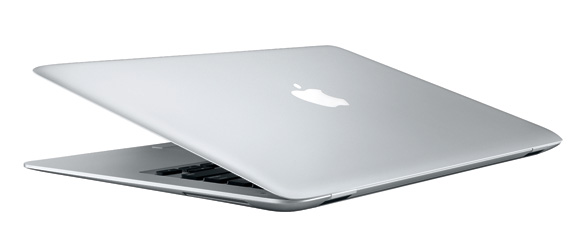
In January 2008, Steve Jobs announced a new model in the Macbook series - Macbook Air. A 13-inch laptop with an aluminum case sets records in weight and thickness. The thickness on the leading edge is only 4 millimeters, almost two centimeters are coming out of the back, but this is still very small for those times. In a typical 14-inch ThinkPad T400 laptop, the thickness exceeds three centimeters. Weight Macbook Air - 1.36 kilograms. Such parameters are achieved partly due to the failure of the optical drive - it sends Apple to the dustbin of history just like the drive in its time, and later - the headphone jack on smartphones.
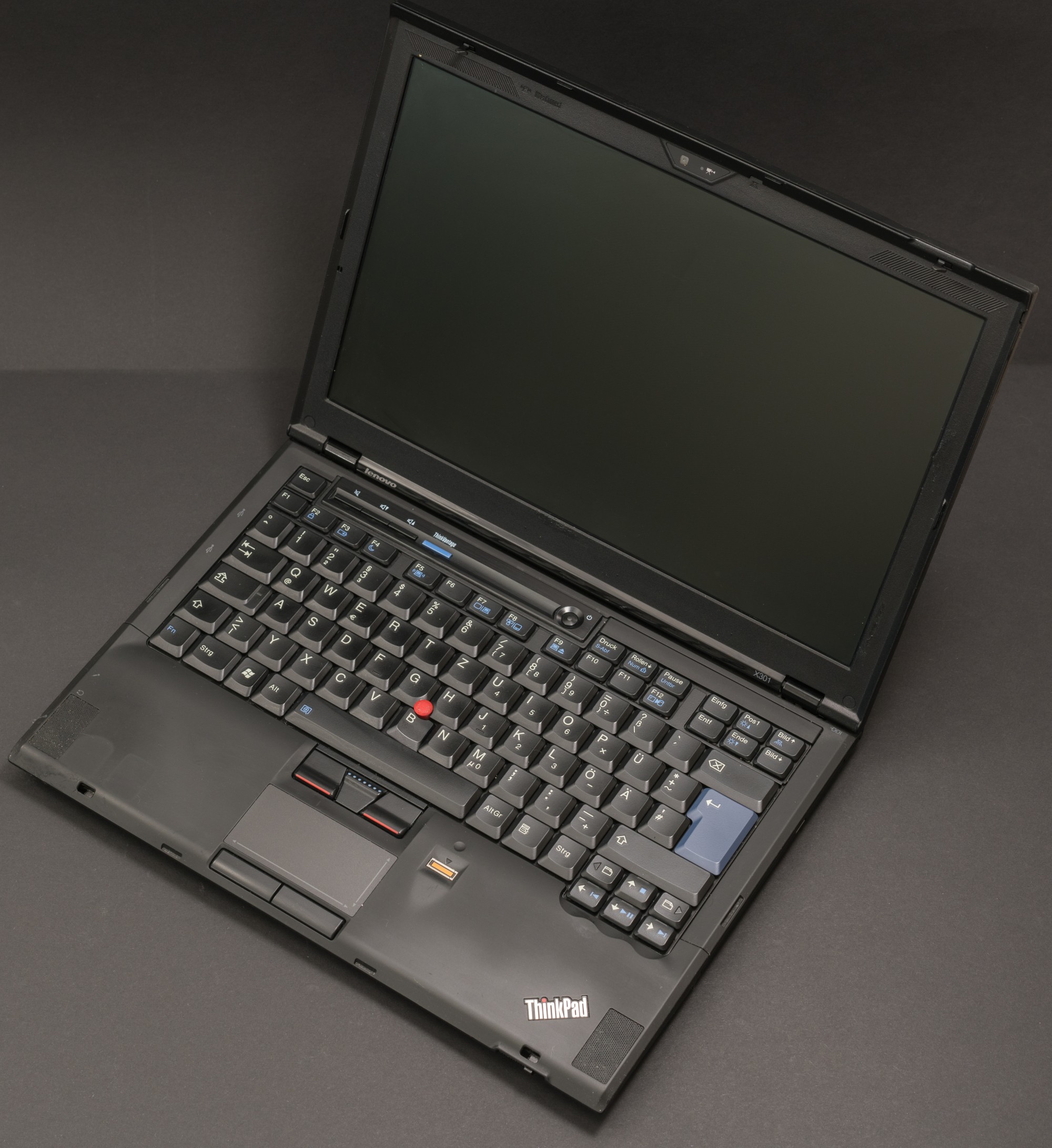
Lenovo’s response to a competitor’s actions is the X300, shown in February 2008. In the same year, in August, the updated X301 model was released - with new Intel processors with ultra low power consumption and DDR3 memory. At the end of 2018, I buy such a laptop for five thousand rubles - a good markdown, taking into account the original cost, strongly for $ 3,000. Unlike Apple, Lenovo did not give up the optical drive, but provided a comparable thickness (19-23 millimeters) and weight (from 1.43 kg). Such parameters and now fully comply with the requirements for a thin and light notebook, although the most compact models weigh a little more (or even slightly less) a kilogram.
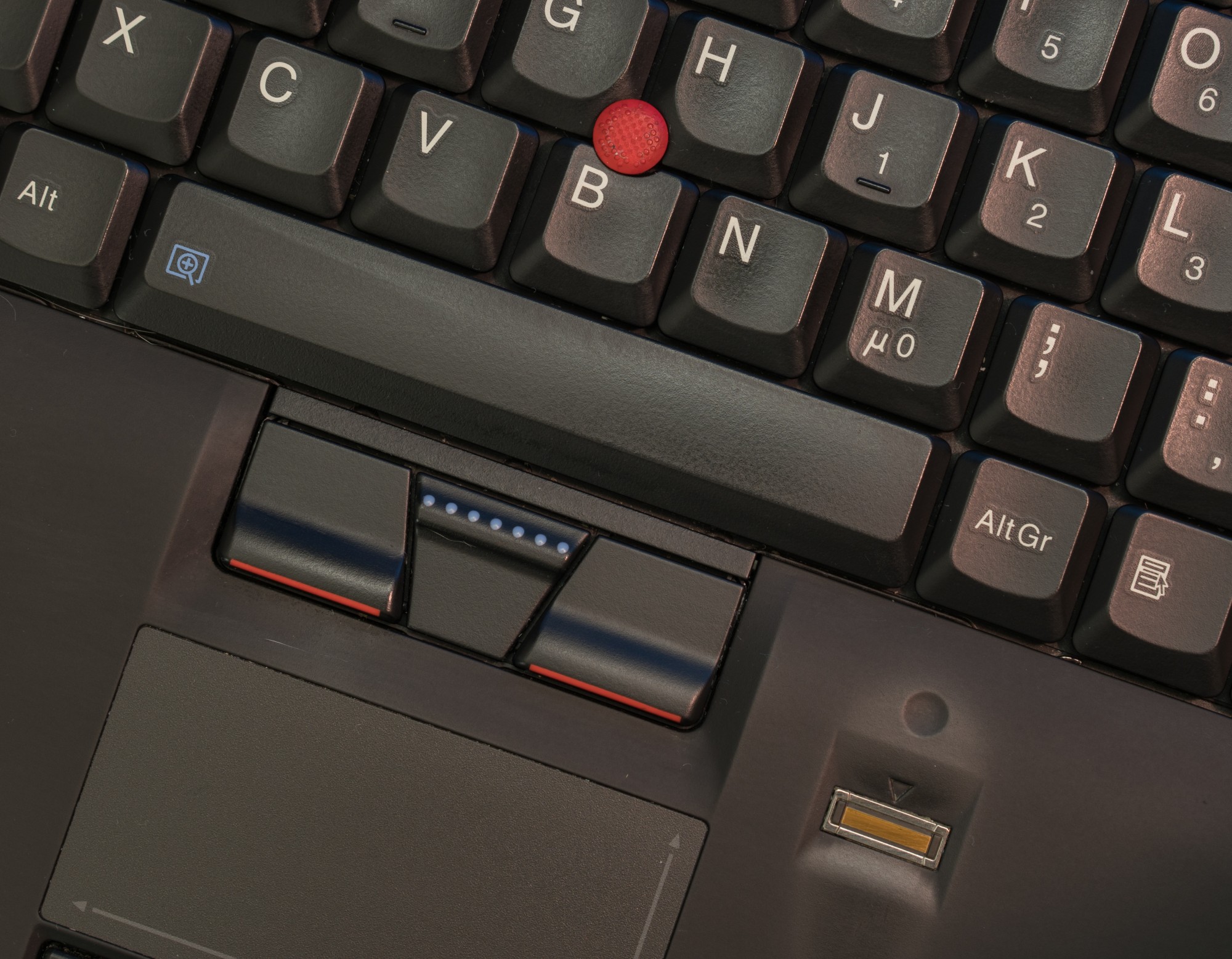
What is he cool! My model is from Germany, with the QWERTZ layout, but if you don’t look at the keyboard, it doesn’t cause any problems. Or you can swap two keys in places. The laptop comes in quite good, though not perfect condition. They were obviously actively used: the surface around the fingerprint sensor was wiped noticeably, glue marks around the screen — a polarizing filter was used, not allowing the contents of the screen to be scanned from the side.

Unlike modern flagships, the set of connectors is full, there are even separate ports for headphones and a microphone. USB 2.0 connectors - three pieces, behind there is a network connector and DisplayPort. Through the adapter, I can easily connect a laptop to a modern FullHD display.

Although the laptop was developed and released by Lenovo, it has absolutely all the technologies that were inherited when you purchased a unit from IBM in 2005. Since 2011, these chips in favor of saving, or compactness, begin to refuse. In X301, despite the size, there is everything: a lock that does not allow a laptop to open in the bag, a ThinkLight keyboard backlight - an LED that illuminates the buttons on the top, a seven-row keyboard with a distinctive key shape, a spatial frame made of magnesium that provides rigidity, channels for drainage that protect electronics in case of unexpected water (coffee, beer) procedures.
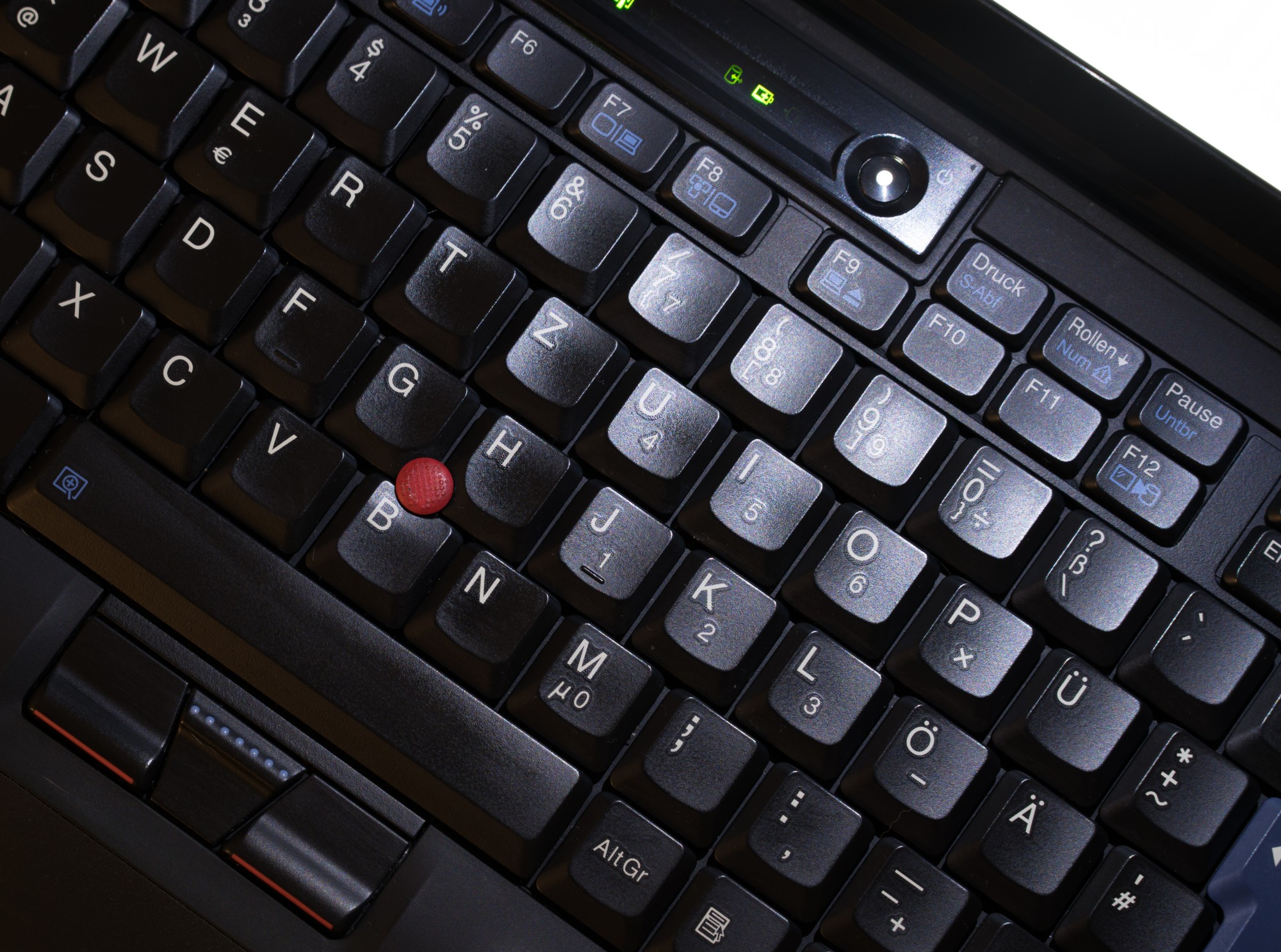
Is it all necessary - a good question. I like the classic keyboard of a ThinkPad notebook, but is it really more comfortable than a modern one? The previous battle around the layout in the comments took place around the PgUp, PgDown, Home and other function buttons, which in X301 are collected in one place, and in modern ones - scattered in different places and are available only when pressed together with the Fn button.
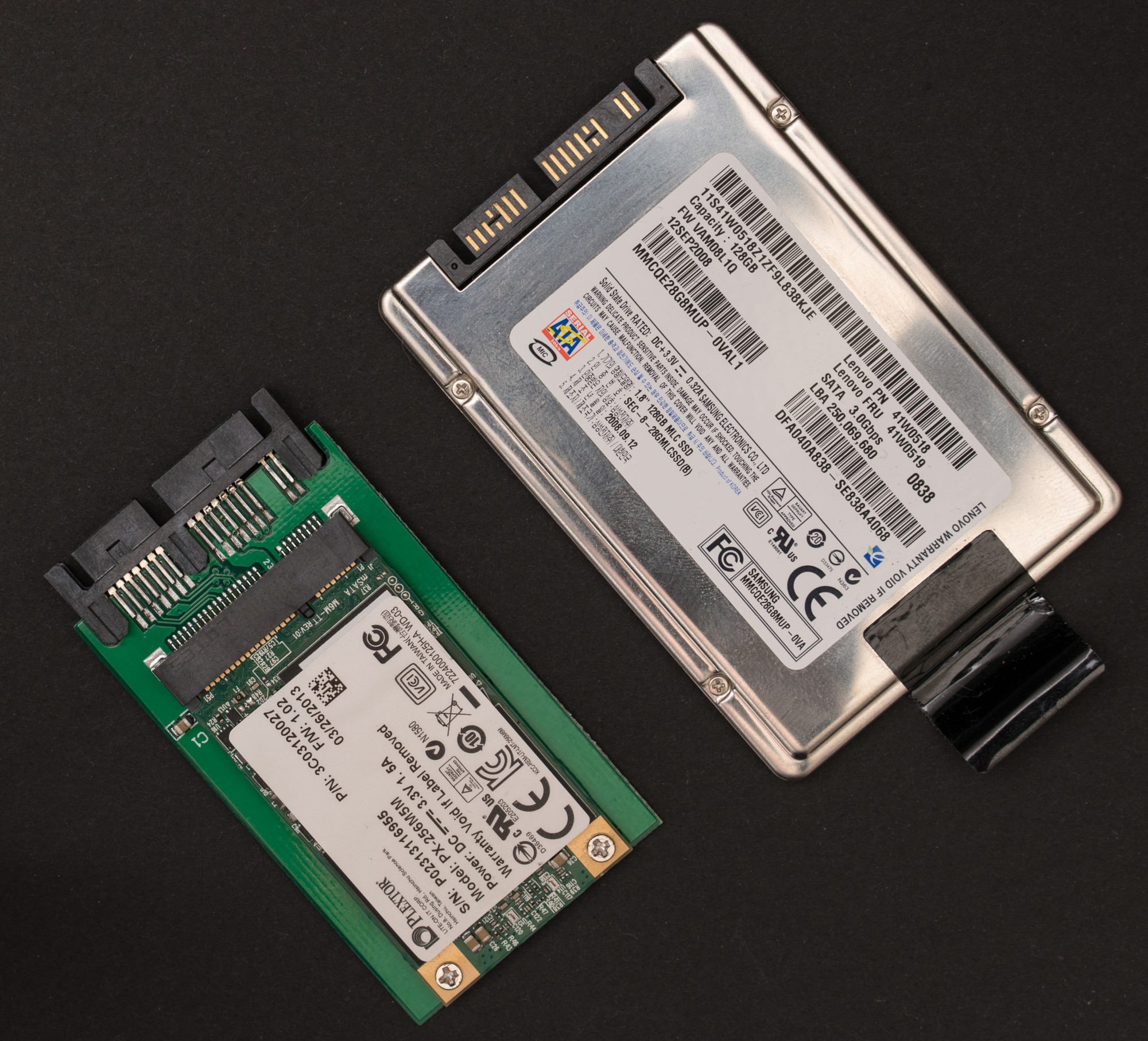
For a minimum thickness, developers had to abandon the usual 2.5-inch hard drives. Instead, the X301 and a pair of other slim models (including the MacBook Air) use 1.8-inch drives. Since the X301 is an expensive laptop, it usually comes directly with an SSD. But if you have a traditional hard disk of this format, you are not lucky - it is very slow, even by 2008 standards. The regular Samsung SSD was once quite good, but now in tests it shows a rather dull result - less than 50 megabytes per second in the sequential write mode. Fortunately, there is an adapter for installing in such laptops a drive with an mSATA connector.
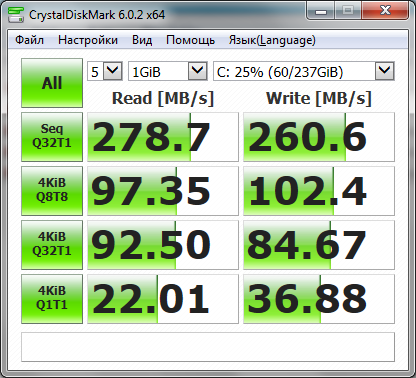
I put the 256-gigabyte SSD borrowed from the X220 and I get the performance (in the screenshot above) almost at the limit of the SATA 2 interface capabilities. Since I took up the screwdriver, let's take the laptop a little more.
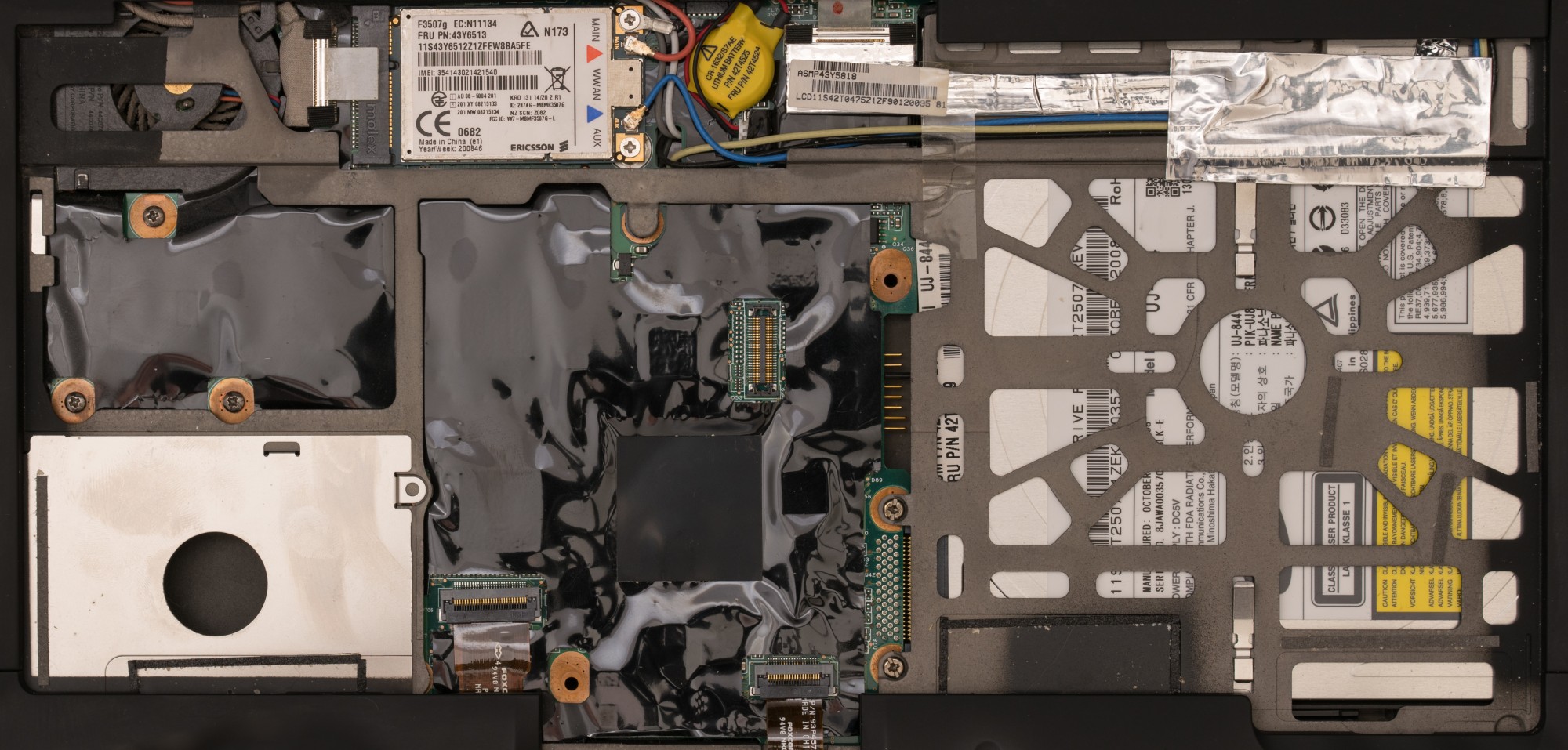
The keyboard is held on two screws. Under it is the 3G module, now probably not very relevant, and a dusty fan is enough. There is nothing more interesting there, the motherboard is hidden under a protective film.
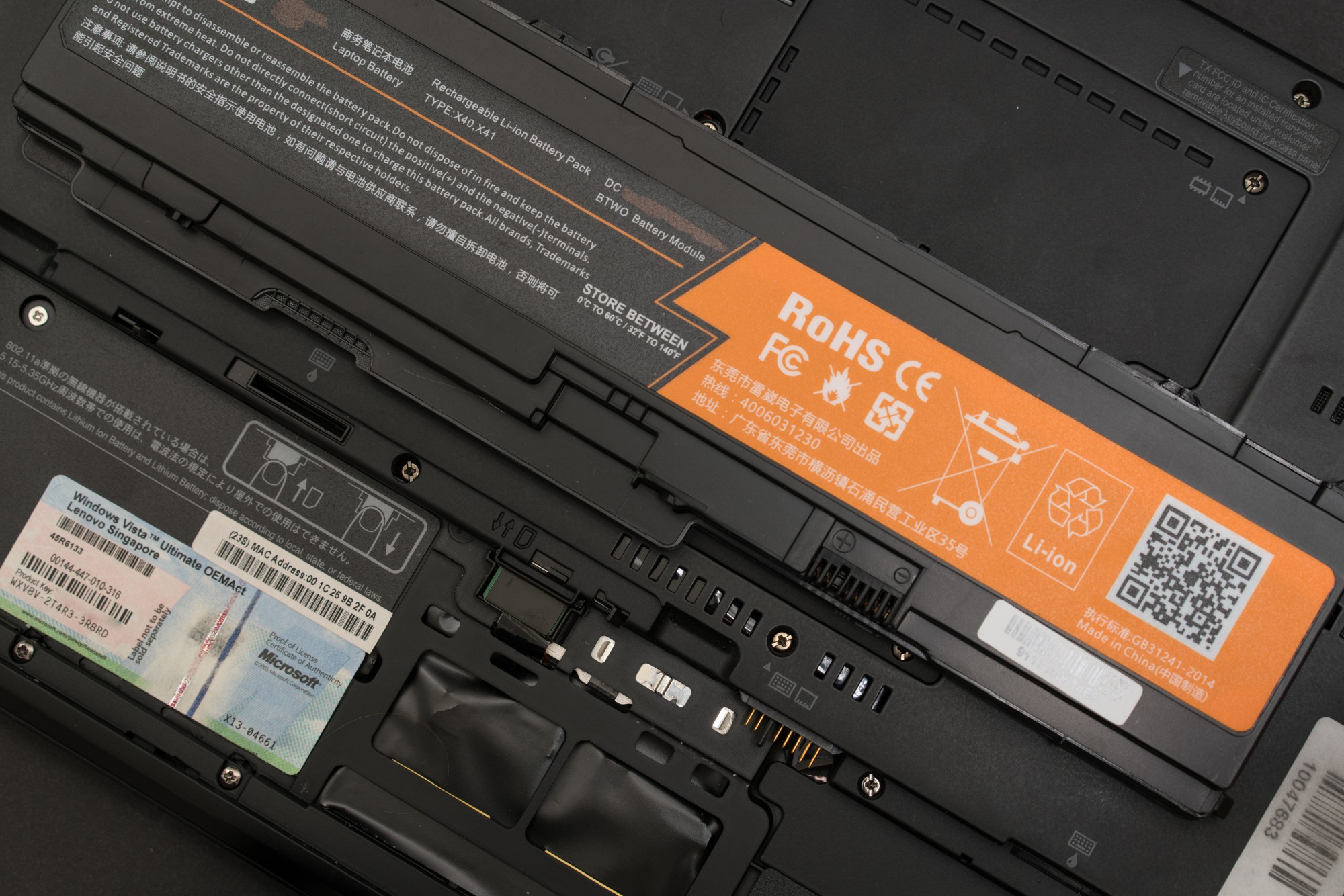
The battery in the X301 is located outside the box - under the touchpad area in front of the notebook. More precisely now it is a standard location, but in modern laptops the battery is not removable. A ten-year-old battery lasts ten minutes without external power. I order a non-original replacement and get the promised, by the standards of 2008, quite good, but now they are not at all impressive 4-5 hours of battery life.
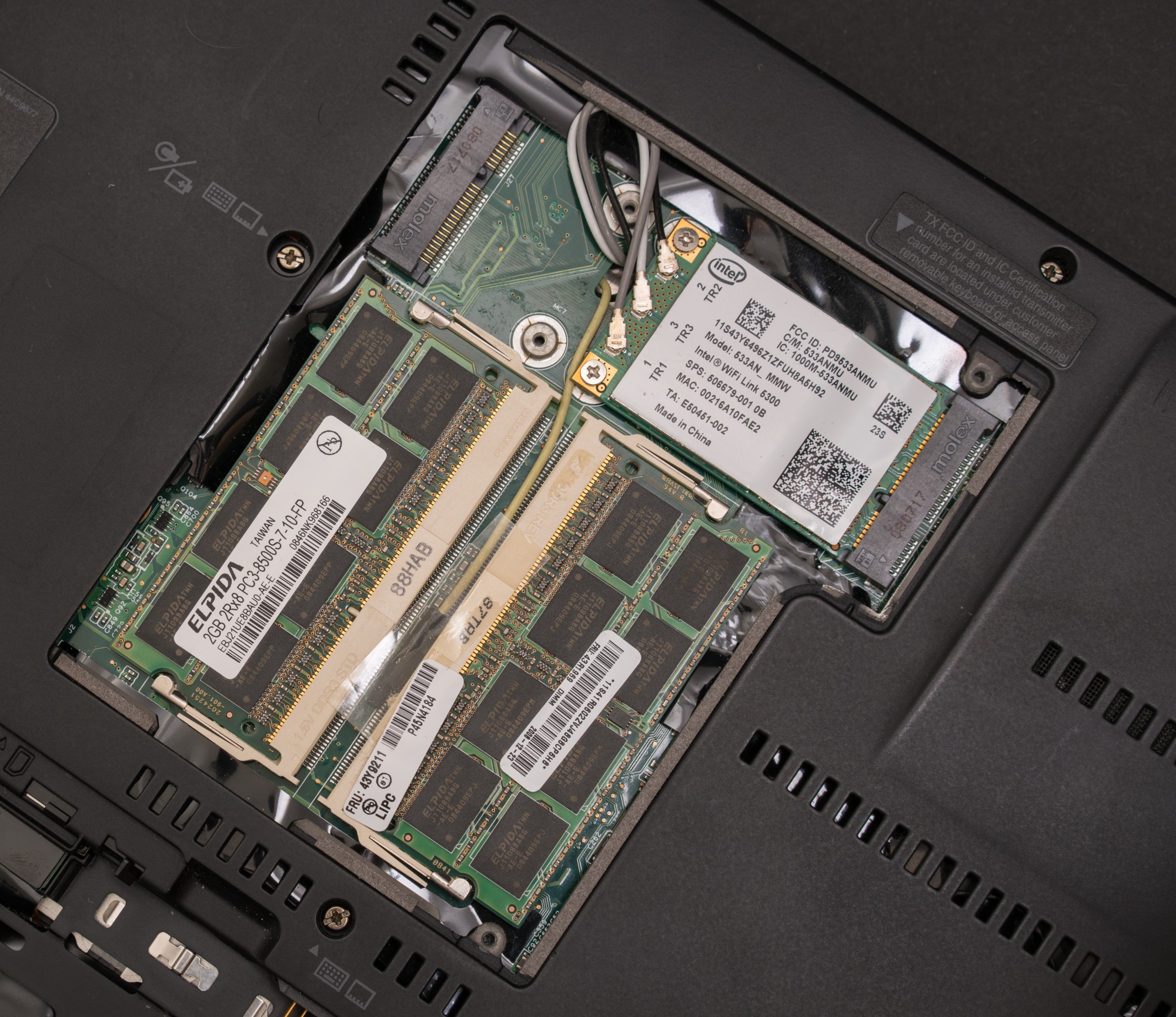
Under a separate cover are memory modules. I am trying to upgrade from 4 to 8 gigabytes, unsuccessful. This is an abnormal configuration, but for some it works. I buy modules with four memory chips on each side. Such X301 does not understand, it needs eight chips each.

The optical drive with a thickness of only 7 millimeters is impressive: it was necessary to manage to stick it into such a thin laptop. The standard height of the optical drive bay in conventional ThinkPad laptops is 9 millimeters, so the peripherals here are unique. Since the drive is not really needed right now, it can be replaced with an additional battery (but first try to find it on sale), with a plug to save weight, or with an adapter for a 7mm hard drive. The latter option gives you the opportunity to increase the data storage X301 even a couple of terabytes, if you suddenly need it.
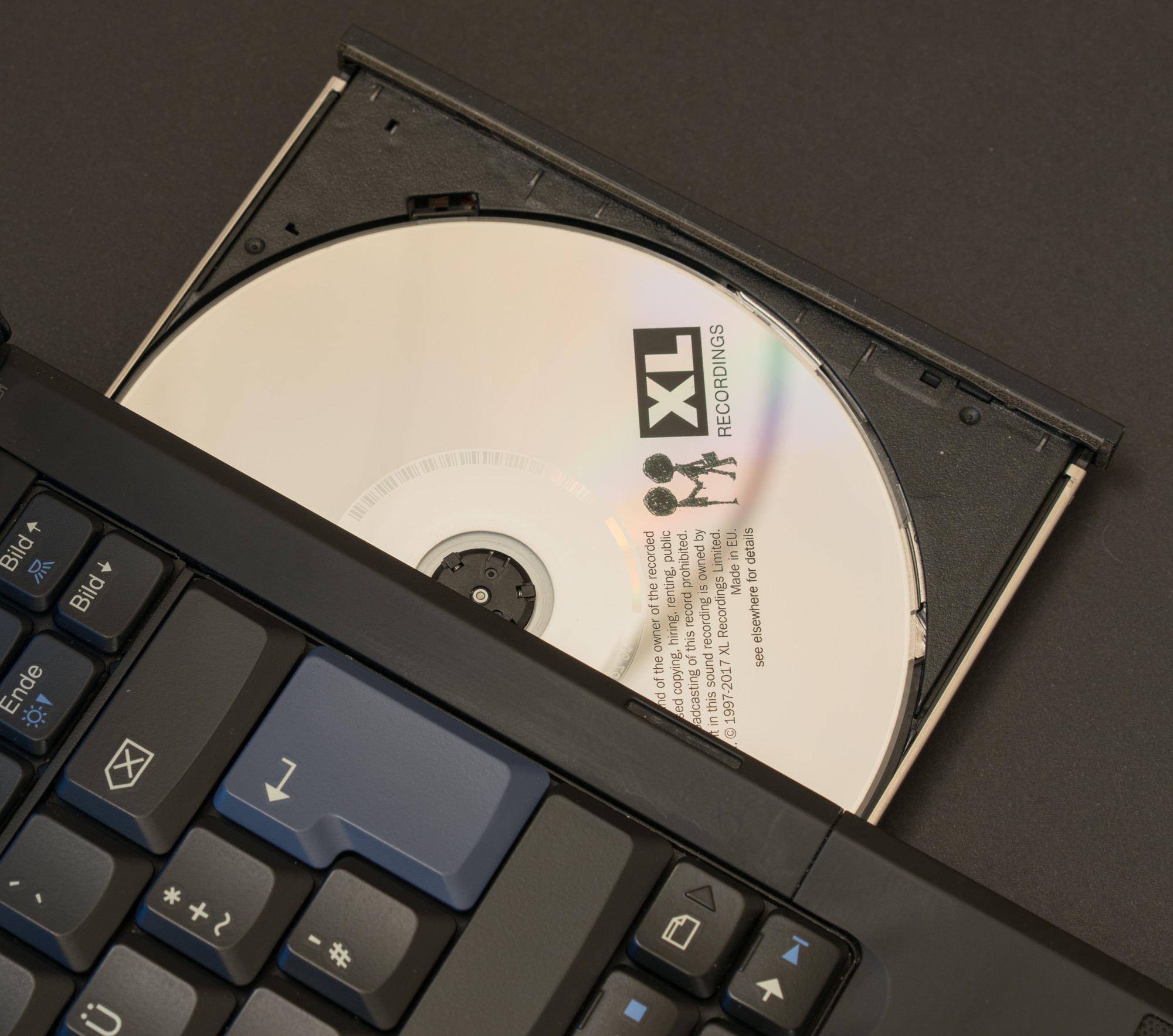
I install Windows 7 on a laptop, although the original OS for it is Windows Vista or even Windows XP. At one point, Lenovo stopped supporting old laptops in its proprietary software, ThinkVantage System Update. Previously, it was possible to automatically download and download all the drivers and utilities on a freshly installed OS. Now only manually, all the necessary software is available here . After downloading a couple of gigabytes of updates, Windows 7 led itself to its current state and began to slow down.
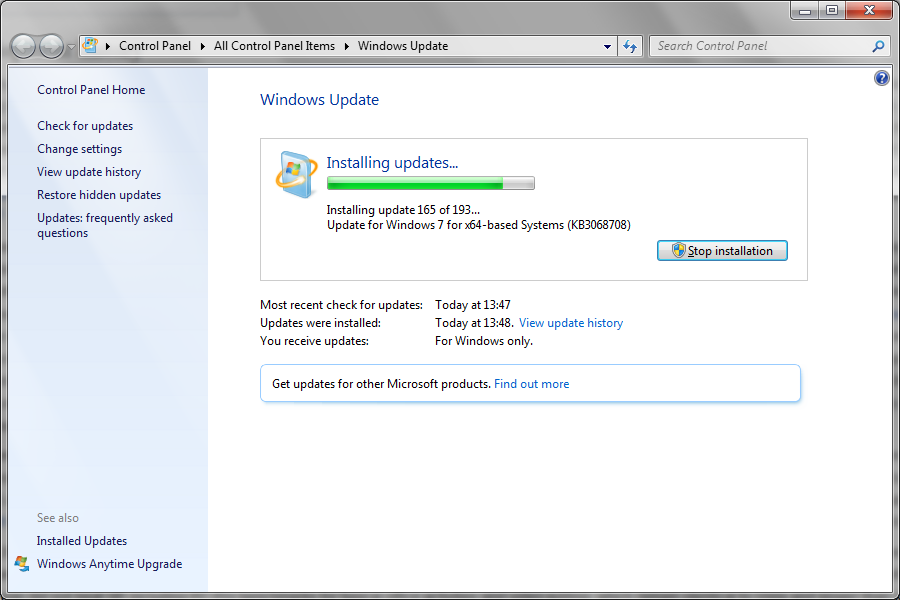
More precisely not so, the interface of Windows 7 is still working smartly, but it is worthwhile to install the minimum set of necessary programs, how the brakes start when you exit sleep mode. Software corresponding to the era, for example, Microsoft Office 2010 works well, at the level of modern laptops with a modern version of software. But the web ... It's strange: ten years ago, if you had a not very fresh laptop, then you said - he says, for something simple. Texts to type, well, for the Internet. Since then, the browser has actually become a platform for applications, and the complexity of the sites has grown so much that the ten-year veteran does not always cope with them adequately. This is especially noticeable on the new design of GMail, which is very heavy. Or on YouTube with video previews.
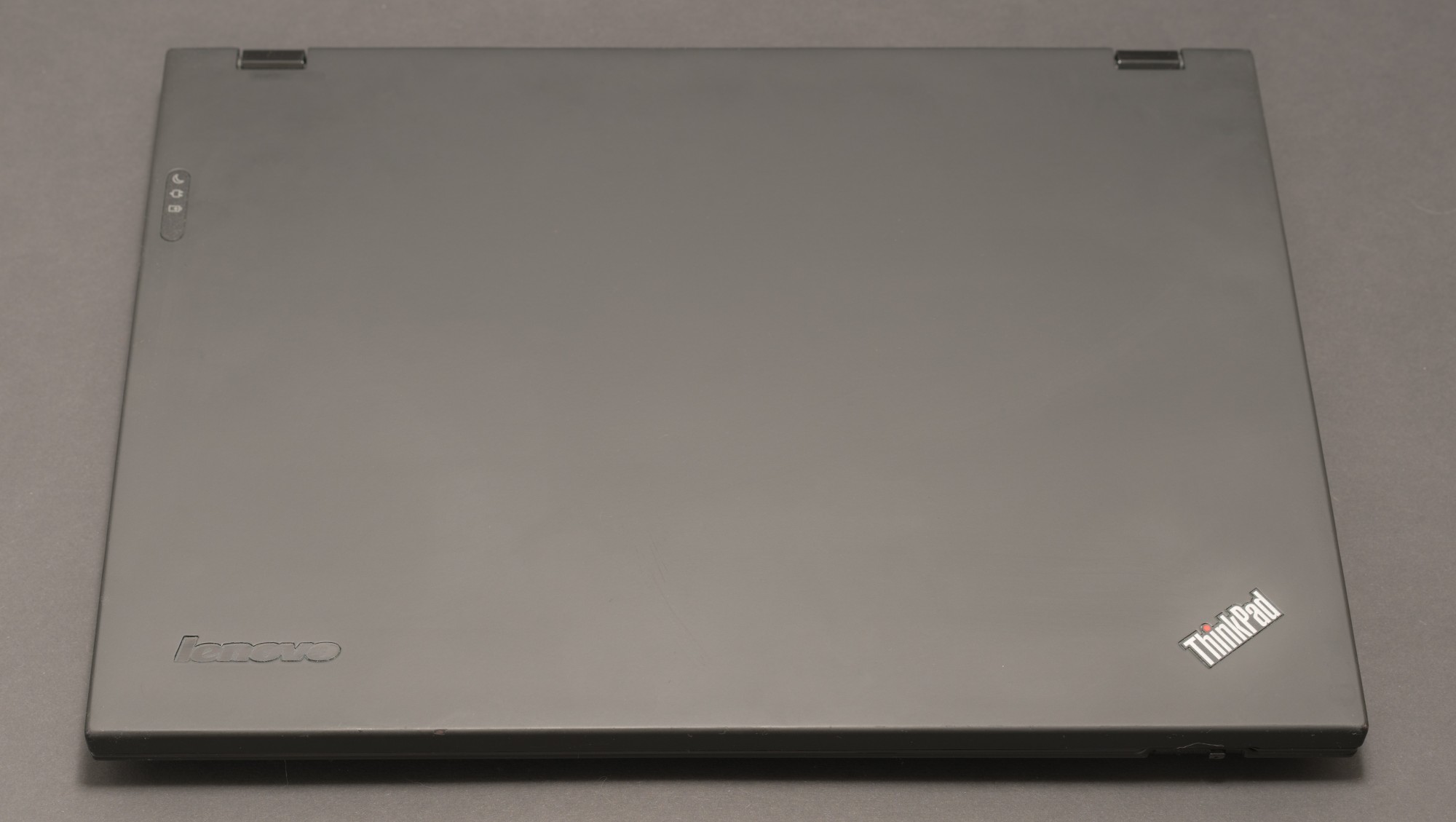
The possibilities of this laptop seriously limits the processor. It belongs to the Intel Core 2 Duo family, but belongs to the low-power version. The dual core processor SU9400 operates at a frequency of just 1.4 gigahertz. Does not know how to accelerate - this feature will begin to implement a year later. Here is a lot of useful information for owners of ThinkPad X301, including a “patched” BIOS, which allows to overclock this processor to 1.6 GHz. Now it makes sense to buy the X301 in the most powerful configuration with a 1.6 GHz processor, and overclock it to 1.8.
What exactly is worth putting is the TPFanControl utility. In the 2008 reviews there are no complaints of fan noise, but by modern standards it is still quite loud. TPFanControl allows the processor to heat up a little more, and almost always the laptop remains silent.

You can evaluate the performance of this processor in the Geekbench 4 benchmark. My working laptop with a Core I7-6600U processor shows 3382 and 6451 points in the single-threaded and multi-threaded tests, respectively. The advantage of three and almost four times - this is very solid.
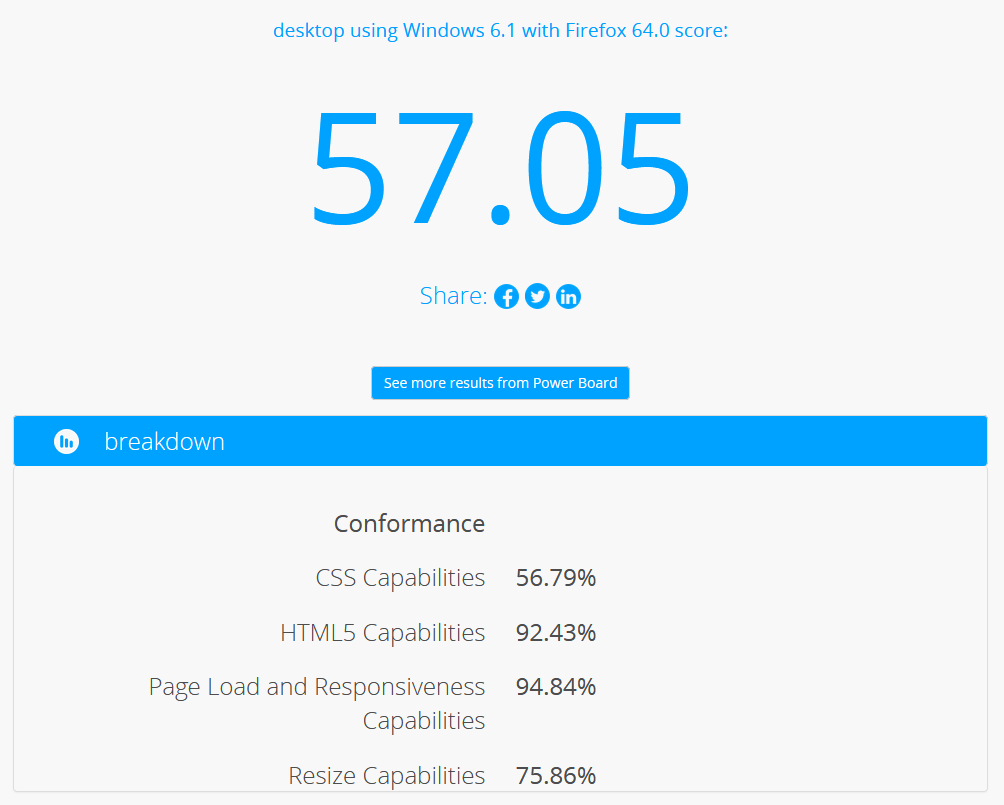
I made another comparison in the BaseMark test , which is fully performed in the browser and partly demonstrates the capabilities of a laptop in processing the modern web. The result of a modern laptop is 285 points. The results of the ThinkPad X301 are shown in the screenshot above - 57 points or exactly five times worse. These are synthetic tests, but they allow us to estimate an objective increase in productivity over 10 years. This is a significant increase, although it must be remembered that we are dealing with one of the weakest processors of the 2008 model year.
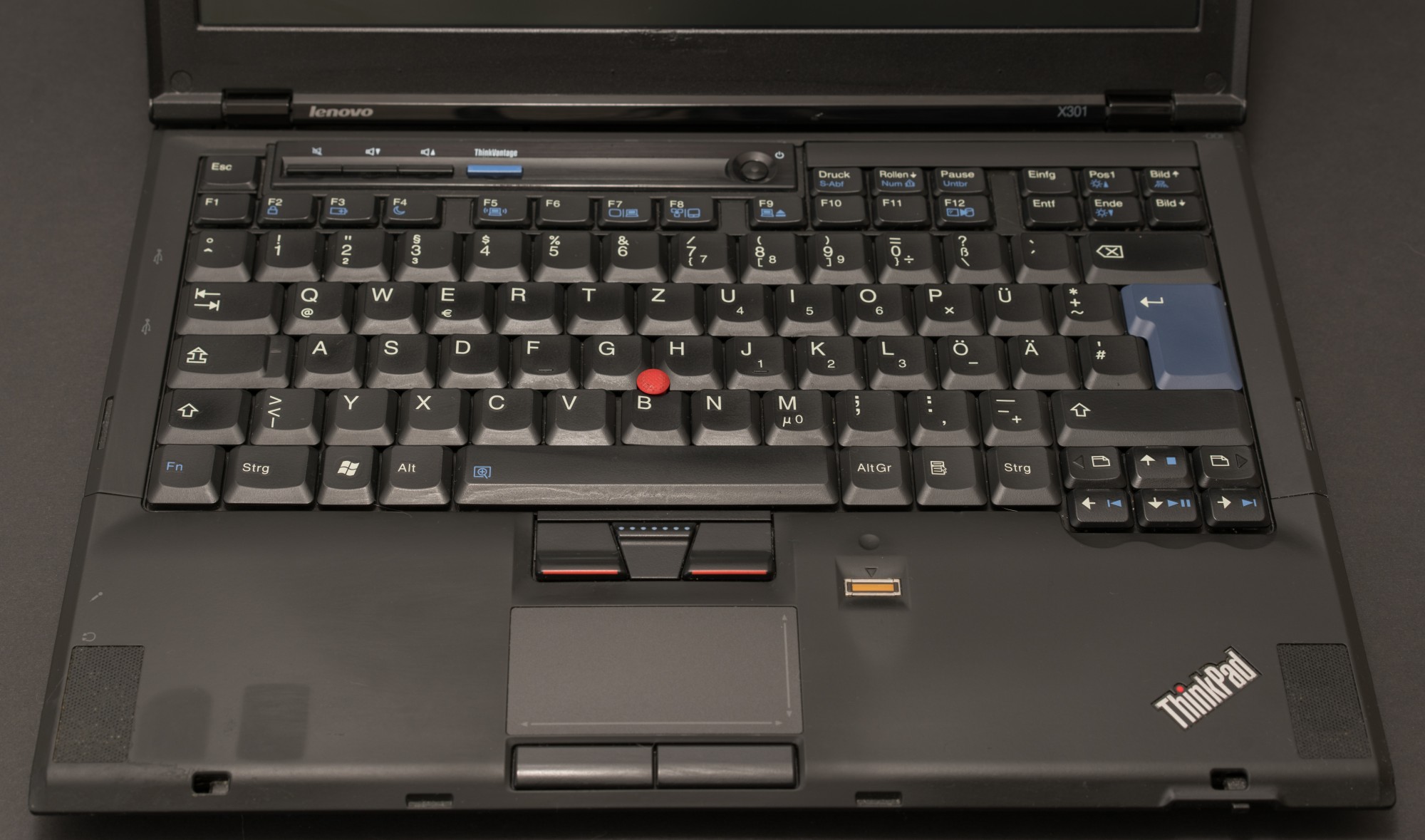
Almost in every post about old laptops, they offer me to put Linux on them, and it seems that for X301 this is very suitable advice. Alas, things did not go quite as we would like. The most modern version of Ubuntu 18.10 out of the box tupila, strewed errors and generally behaved inadequately. Maybe I was just unlucky, but most likely the X301 already requires a “lightweight” distribution, such as Lubuntu. I test on it a reliable Raspbian distribution kit which was originally created for low-power systems. And there are no problems there, moreover - even managed to get a higher result in the Basemark test - 75 points instead of 57. If you don’t limit yourself to Linux, then Windows 10 may be a good option for the X301: sometimes it shows better responsiveness on a limited hardware than windows 7.

In the photo - a comparison of the thickness of the ThinkPad X301 with a ThinkPad X1 Carbon laptop 2014 release. To surpass the parameters of the flagship of 2008, it took about three years: in 2011, the model was released ThinkPad X1, which was scolded a lot for the "wrong" keyboard, and for the built-in battery. A few more years passed, and the difference is evident: the new laptop is wider than the old one, smaller than a centimeter, while it holds a more spacious 14-inch matrix. It weighs less: 1.13 kilograms. Battery life is a little longer, and current models consistently provide 10 or more hours of battery life.
The story repeats itself: Intel processors of the eighth generation Core show approximately the same set of problems as their predecessors, the “minus of the first” generation, only in a new way. In 2008, it was just a limited processor frequency. In 2018, this is a tricky power management that provides maximum power for a couple of minutes, and then the economy mode is activated. It is such tricks that are a direct consequence of objective technical difficulties, in the range of a couple of years, allow us to say that nothing new appears, no progress and in general. But there is progress: over the past couple of years, fast NVMe SSDs have become the standard in laptops, even from the middle level, and starting from the eighth generation of Intel processors, it has been possible to purchase a compact laptop with four cores.

If measured in decades, there is progress, and what else. In general, I am quite willing to accept the limited performance of the ThinkPad X301. A much more noticeable disadvantage is the screen, although of high resolution (1440x900), but with limited viewing angles. Now, when in all laptops, except the cheapest, there are IPS matrices, it is difficult to get used to the old displays again. In the fall, I actively used the X301 for typing texts on an industrial scale, until I ordered one button on the keyboard to live for a long time, apparently shattered by the previous owner.
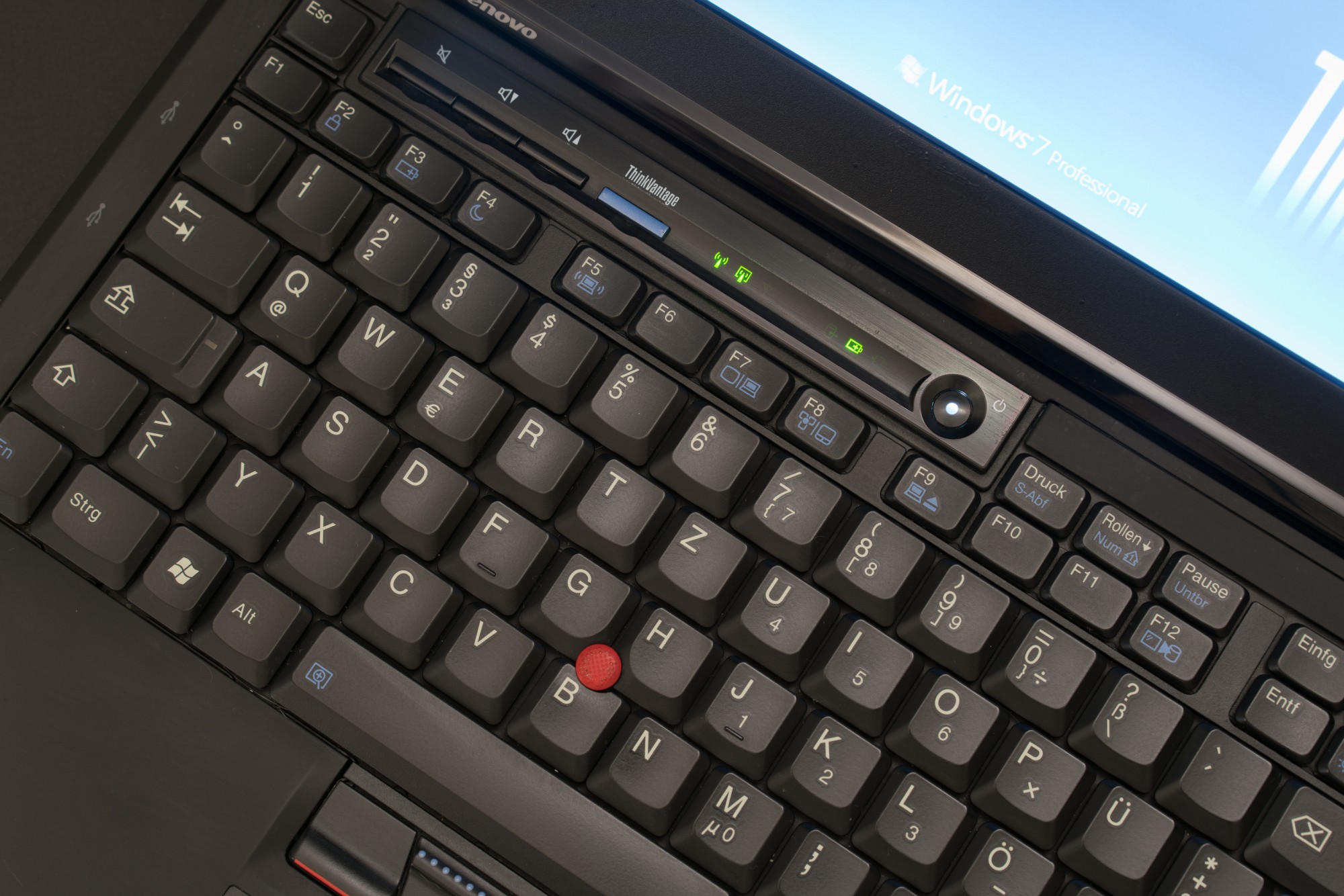
The laptop is noticeably different from the modern number of indicators: it seems there is a separate light for almost everything. Even the ThinkVantage button is highlighted.
After replacing the keyboard, I plan to use this laptop as a “transfer point” software for older models. And maybe I will remember my skills in red-eye, and try to implement on it a minimalist environment based on Gentoo Linux. Another option for this model is to use it as a home server for sharing files and other things. But the “pensioner” of the ThinkPad X220 works much better for me. "Three hundred and first" will remain a compact portable laptop just in case - if that, it still may well serve as a working tool. But the development of the web and the development of software with an eye on more powerful hardware led to the fact that the ten-year-old flagship can hardly cope with even simple tasks. Unlike the older laptops in my collection, it’s still a modern model,
Update : Already after the publication of the article, I decided on a hardware modification of the laptop, examined by our Chinese comrades here .

I ask you not to swear at the quality of soldering, I understand everything :) The essence of fashion is in soldering a resistor and soldering it to another contact, you can see in the photo. To do this, you need to disassemble the entire laptop, dismantle the motherboard, remove the protective film. It is also advisable to update the thermal grease under the heatpipes of the cooler, and clean the fan. Modification for people with experience and high-quality equipment. To be honest, I had neither one nor the other; I was just lucky, but I could not.

This is the result obtained according to CPU-Z. The system bus frequency has risen from 800 to 1066 megahertz, the processor frequency has increased from 1.6 to 2.13 GHz. Initially, I remind you, it was 1.4 GHz, but the extra 200 megahertz is achieved by a modified firmware in the BIOS. After the mod, the laptop was constantly hanging - I was already preparing to conjure up with the processor voltage, but the replacement of the memory modules with others of the same size, but calculated at a frequency of up to 1600 megahertz, helped. With them, everything is stable, the CPU temperature under load is kept around70 80 degrees.

The results in Geekbench 4 are now the same, compare with the original (at 1600 megahertz) rates higher. A 38% increase in single-threaded test and 48% in multi-threaded is very cool for one exact blow with a soldering iron. Not that this radically changes the situation with a laptop. I also tested it in the Cinebench test and compared it with the results on the Notebookcheck website . In the single-threaded test, the X301 now shows the result at the level of the Core i5 of the first generation, while in the multithreaded test it is only at the level of the unrestricted Core 2 Duo and the older Intel Atom. The increase in Cinebench is more modest - 10% in a multi-threaded test. The vintage laptop has remained vintage, but it has become more comfortable to use, and perhaps I will still finish the upgrade by purchasing the correct 8 gigabyte memory modules.
Update 2: Surely, sooner or later, someone willing to apply a similar modification will get to this post. Given that all of the above is true, I do not recommend this method. The withdrawal of equipment for the standard parameters is always an experiment, with incomprehensible consequences, up to a complete failure of the piece of iron, which could, albeit slowly, but work. In my case, while there are problems in any applications that seriously involve the graphics subsystem (for example, in the same Basemark benchmark, or in 3DMark) - the system falls out into a blue screen. It is probably possible to achieve stable work, but these surprises must be prepared in advance.

X301 is a model of 2008, in August last year it turned 10 years old. At the time of the announcement, it was one of the most expensive laptops in principle: in exchange for money, they offered you an incredibly thin model that could compete with the Apple Macbook Air presented shortly before. For a long time, there was no adequate alternative to this laptop - in terms of screen size, weight, performance. And fans of the real “true” ThinkPad will find in it many features more inaccessible. Today I want to tell you about the reference classic ThinkPad.
I keep the diary of the collector of old pieces of iron in real time in the Telegram . Weekly, on Tuesdays, I publish clippings from computer magazines of the past. In the latest issue - laptops of 1990, MS-DOS 4.01 in Russian and a very strange LCD display for five thousand dollars.

In January 2008, Steve Jobs announced a new model in the Macbook series - Macbook Air. A 13-inch laptop with an aluminum case sets records in weight and thickness. The thickness on the leading edge is only 4 millimeters, almost two centimeters are coming out of the back, but this is still very small for those times. In a typical 14-inch ThinkPad T400 laptop, the thickness exceeds three centimeters. Weight Macbook Air - 1.36 kilograms. Such parameters are achieved partly due to the failure of the optical drive - it sends Apple to the dustbin of history just like the drive in its time, and later - the headphone jack on smartphones.

Lenovo’s response to a competitor’s actions is the X300, shown in February 2008. In the same year, in August, the updated X301 model was released - with new Intel processors with ultra low power consumption and DDR3 memory. At the end of 2018, I buy such a laptop for five thousand rubles - a good markdown, taking into account the original cost, strongly for $ 3,000. Unlike Apple, Lenovo did not give up the optical drive, but provided a comparable thickness (19-23 millimeters) and weight (from 1.43 kg). Such parameters and now fully comply with the requirements for a thin and light notebook, although the most compact models weigh a little more (or even slightly less) a kilogram.

What is he cool! My model is from Germany, with the QWERTZ layout, but if you don’t look at the keyboard, it doesn’t cause any problems. Or you can swap two keys in places. The laptop comes in quite good, though not perfect condition. They were obviously actively used: the surface around the fingerprint sensor was wiped noticeably, glue marks around the screen — a polarizing filter was used, not allowing the contents of the screen to be scanned from the side.

Unlike modern flagships, the set of connectors is full, there are even separate ports for headphones and a microphone. USB 2.0 connectors - three pieces, behind there is a network connector and DisplayPort. Through the adapter, I can easily connect a laptop to a modern FullHD display.

Although the laptop was developed and released by Lenovo, it has absolutely all the technologies that were inherited when you purchased a unit from IBM in 2005. Since 2011, these chips in favor of saving, or compactness, begin to refuse. In X301, despite the size, there is everything: a lock that does not allow a laptop to open in the bag, a ThinkLight keyboard backlight - an LED that illuminates the buttons on the top, a seven-row keyboard with a distinctive key shape, a spatial frame made of magnesium that provides rigidity, channels for drainage that protect electronics in case of unexpected water (coffee, beer) procedures.

Is it all necessary - a good question. I like the classic keyboard of a ThinkPad notebook, but is it really more comfortable than a modern one? The previous battle around the layout in the comments took place around the PgUp, PgDown, Home and other function buttons, which in X301 are collected in one place, and in modern ones - scattered in different places and are available only when pressed together with the Fn button.

For a minimum thickness, developers had to abandon the usual 2.5-inch hard drives. Instead, the X301 and a pair of other slim models (including the MacBook Air) use 1.8-inch drives. Since the X301 is an expensive laptop, it usually comes directly with an SSD. But if you have a traditional hard disk of this format, you are not lucky - it is very slow, even by 2008 standards. The regular Samsung SSD was once quite good, but now in tests it shows a rather dull result - less than 50 megabytes per second in the sequential write mode. Fortunately, there is an adapter for installing in such laptops a drive with an mSATA connector.

I put the 256-gigabyte SSD borrowed from the X220 and I get the performance (in the screenshot above) almost at the limit of the SATA 2 interface capabilities. Since I took up the screwdriver, let's take the laptop a little more.

The keyboard is held on two screws. Under it is the 3G module, now probably not very relevant, and a dusty fan is enough. There is nothing more interesting there, the motherboard is hidden under a protective film.

The battery in the X301 is located outside the box - under the touchpad area in front of the notebook. More precisely now it is a standard location, but in modern laptops the battery is not removable. A ten-year-old battery lasts ten minutes without external power. I order a non-original replacement and get the promised, by the standards of 2008, quite good, but now they are not at all impressive 4-5 hours of battery life.

Under a separate cover are memory modules. I am trying to upgrade from 4 to 8 gigabytes, unsuccessful. This is an abnormal configuration, but for some it works. I buy modules with four memory chips on each side. Such X301 does not understand, it needs eight chips each.

The optical drive with a thickness of only 7 millimeters is impressive: it was necessary to manage to stick it into such a thin laptop. The standard height of the optical drive bay in conventional ThinkPad laptops is 9 millimeters, so the peripherals here are unique. Since the drive is not really needed right now, it can be replaced with an additional battery (but first try to find it on sale), with a plug to save weight, or with an adapter for a 7mm hard drive. The latter option gives you the opportunity to increase the data storage X301 even a couple of terabytes, if you suddenly need it.

I install Windows 7 on a laptop, although the original OS for it is Windows Vista or even Windows XP. At one point, Lenovo stopped supporting old laptops in its proprietary software, ThinkVantage System Update. Previously, it was possible to automatically download and download all the drivers and utilities on a freshly installed OS. Now only manually, all the necessary software is available here . After downloading a couple of gigabytes of updates, Windows 7 led itself to its current state and began to slow down.

More precisely not so, the interface of Windows 7 is still working smartly, but it is worthwhile to install the minimum set of necessary programs, how the brakes start when you exit sleep mode. Software corresponding to the era, for example, Microsoft Office 2010 works well, at the level of modern laptops with a modern version of software. But the web ... It's strange: ten years ago, if you had a not very fresh laptop, then you said - he says, for something simple. Texts to type, well, for the Internet. Since then, the browser has actually become a platform for applications, and the complexity of the sites has grown so much that the ten-year veteran does not always cope with them adequately. This is especially noticeable on the new design of GMail, which is very heavy. Or on YouTube with video previews.

The possibilities of this laptop seriously limits the processor. It belongs to the Intel Core 2 Duo family, but belongs to the low-power version. The dual core processor SU9400 operates at a frequency of just 1.4 gigahertz. Does not know how to accelerate - this feature will begin to implement a year later. Here is a lot of useful information for owners of ThinkPad X301, including a “patched” BIOS, which allows to overclock this processor to 1.6 GHz. Now it makes sense to buy the X301 in the most powerful configuration with a 1.6 GHz processor, and overclock it to 1.8.
What exactly is worth putting is the TPFanControl utility. In the 2008 reviews there are no complaints of fan noise, but by modern standards it is still quite loud. TPFanControl allows the processor to heat up a little more, and almost always the laptop remains silent.

You can evaluate the performance of this processor in the Geekbench 4 benchmark. My working laptop with a Core I7-6600U processor shows 3382 and 6451 points in the single-threaded and multi-threaded tests, respectively. The advantage of three and almost four times - this is very solid.

I made another comparison in the BaseMark test , which is fully performed in the browser and partly demonstrates the capabilities of a laptop in processing the modern web. The result of a modern laptop is 285 points. The results of the ThinkPad X301 are shown in the screenshot above - 57 points or exactly five times worse. These are synthetic tests, but they allow us to estimate an objective increase in productivity over 10 years. This is a significant increase, although it must be remembered that we are dealing with one of the weakest processors of the 2008 model year.

Almost in every post about old laptops, they offer me to put Linux on them, and it seems that for X301 this is very suitable advice. Alas, things did not go quite as we would like. The most modern version of Ubuntu 18.10 out of the box tupila, strewed errors and generally behaved inadequately. Maybe I was just unlucky, but most likely the X301 already requires a “lightweight” distribution, such as Lubuntu. I test on it a reliable Raspbian distribution kit which was originally created for low-power systems. And there are no problems there, moreover - even managed to get a higher result in the Basemark test - 75 points instead of 57. If you don’t limit yourself to Linux, then Windows 10 may be a good option for the X301: sometimes it shows better responsiveness on a limited hardware than windows 7.

In the photo - a comparison of the thickness of the ThinkPad X301 with a ThinkPad X1 Carbon laptop 2014 release. To surpass the parameters of the flagship of 2008, it took about three years: in 2011, the model was released ThinkPad X1, which was scolded a lot for the "wrong" keyboard, and for the built-in battery. A few more years passed, and the difference is evident: the new laptop is wider than the old one, smaller than a centimeter, while it holds a more spacious 14-inch matrix. It weighs less: 1.13 kilograms. Battery life is a little longer, and current models consistently provide 10 or more hours of battery life.
The story repeats itself: Intel processors of the eighth generation Core show approximately the same set of problems as their predecessors, the “minus of the first” generation, only in a new way. In 2008, it was just a limited processor frequency. In 2018, this is a tricky power management that provides maximum power for a couple of minutes, and then the economy mode is activated. It is such tricks that are a direct consequence of objective technical difficulties, in the range of a couple of years, allow us to say that nothing new appears, no progress and in general. But there is progress: over the past couple of years, fast NVMe SSDs have become the standard in laptops, even from the middle level, and starting from the eighth generation of Intel processors, it has been possible to purchase a compact laptop with four cores.

If measured in decades, there is progress, and what else. In general, I am quite willing to accept the limited performance of the ThinkPad X301. A much more noticeable disadvantage is the screen, although of high resolution (1440x900), but with limited viewing angles. Now, when in all laptops, except the cheapest, there are IPS matrices, it is difficult to get used to the old displays again. In the fall, I actively used the X301 for typing texts on an industrial scale, until I ordered one button on the keyboard to live for a long time, apparently shattered by the previous owner.

The laptop is noticeably different from the modern number of indicators: it seems there is a separate light for almost everything. Even the ThinkVantage button is highlighted.
After replacing the keyboard, I plan to use this laptop as a “transfer point” software for older models. And maybe I will remember my skills in red-eye, and try to implement on it a minimalist environment based on Gentoo Linux. Another option for this model is to use it as a home server for sharing files and other things. But the “pensioner” of the ThinkPad X220 works much better for me. "Three hundred and first" will remain a compact portable laptop just in case - if that, it still may well serve as a working tool. But the development of the web and the development of software with an eye on more powerful hardware led to the fact that the ten-year-old flagship can hardly cope with even simple tasks. Unlike the older laptops in my collection, it’s still a modern model,
Update : Already after the publication of the article, I decided on a hardware modification of the laptop, examined by our Chinese comrades here .

I ask you not to swear at the quality of soldering, I understand everything :) The essence of fashion is in soldering a resistor and soldering it to another contact, you can see in the photo. To do this, you need to disassemble the entire laptop, dismantle the motherboard, remove the protective film. It is also advisable to update the thermal grease under the heatpipes of the cooler, and clean the fan. Modification for people with experience and high-quality equipment. To be honest, I had neither one nor the other; I was just lucky, but I could not.

This is the result obtained according to CPU-Z. The system bus frequency has risen from 800 to 1066 megahertz, the processor frequency has increased from 1.6 to 2.13 GHz. Initially, I remind you, it was 1.4 GHz, but the extra 200 megahertz is achieved by a modified firmware in the BIOS. After the mod, the laptop was constantly hanging - I was already preparing to conjure up with the processor voltage, but the replacement of the memory modules with others of the same size, but calculated at a frequency of up to 1600 megahertz, helped. With them, everything is stable, the CPU temperature under load is kept around

The results in Geekbench 4 are now the same, compare with the original (at 1600 megahertz) rates higher. A 38% increase in single-threaded test and 48% in multi-threaded is very cool for one exact blow with a soldering iron. Not that this radically changes the situation with a laptop. I also tested it in the Cinebench test and compared it with the results on the Notebookcheck website . In the single-threaded test, the X301 now shows the result at the level of the Core i5 of the first generation, while in the multithreaded test it is only at the level of the unrestricted Core 2 Duo and the older Intel Atom. The increase in Cinebench is more modest - 10% in a multi-threaded test. The vintage laptop has remained vintage, but it has become more comfortable to use, and perhaps I will still finish the upgrade by purchasing the correct 8 gigabyte memory modules.
Update 2: Surely, sooner or later, someone willing to apply a similar modification will get to this post. Given that all of the above is true, I do not recommend this method. The withdrawal of equipment for the standard parameters is always an experiment, with incomprehensible consequences, up to a complete failure of the piece of iron, which could, albeit slowly, but work. In my case, while there are problems in any applications that seriously involve the graphics subsystem (for example, in the same Basemark benchmark, or in 3DMark) - the system falls out into a blue screen. It is probably possible to achieve stable work, but these surprises must be prepared in advance.
